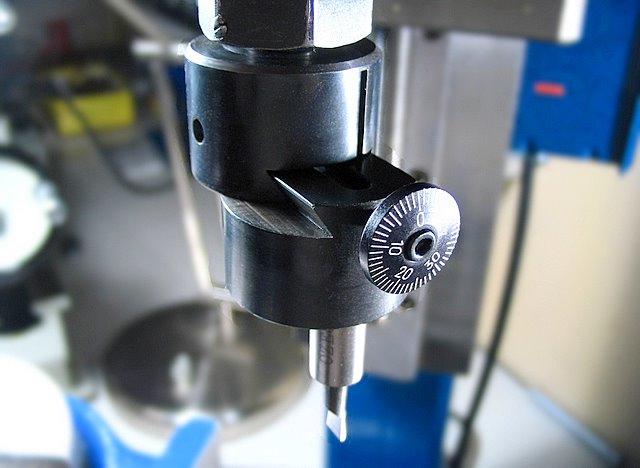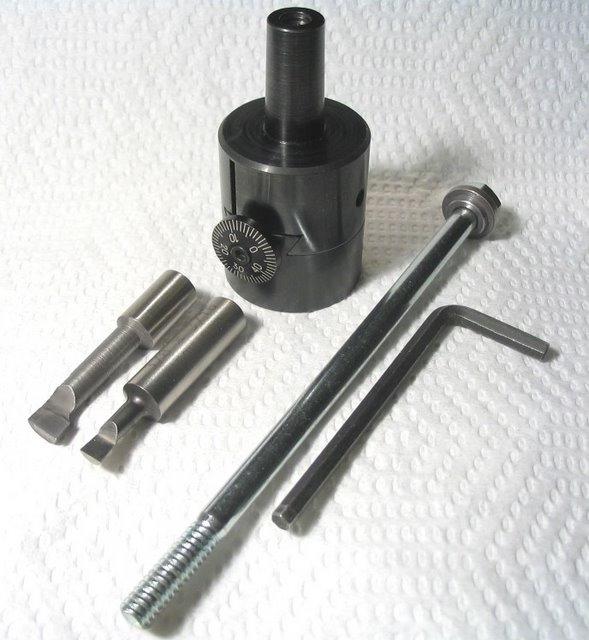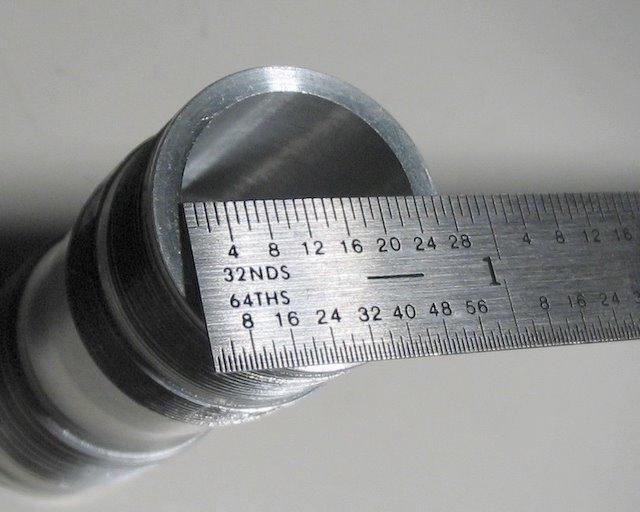
John R. Bentley 2008.
Using the Sherline Boring Head
- on the Taig Mill
July 2008.

John R. Bentley 2008.
Using the Sherline Boring Head
- on the Taig Mill
This is a great little boring head, it comes equipped with an integral MT No.1 shank for the Sherline milling machines. Alternatively, it is a very simple matter to convert it to suit the ER-16 collet system becoming so popular on the Taig mills.
Being physically very small, the unit is well suited to working in close quarters. The quality of machining and finish on this tool from Sherline is excellent. The all-important dovetail slide is silky smooth and the toolholding portion can be inserted from either side to cover the entire hole diameter range with the minimum amount of overhang.


This is the stock Sherline kit.

Note the Morse Taper No.1 shank protruding from the body with a threaded hole for the drawbar.
This is easily modified by turning it down in the lathe to form a 3/8" parallel shank.
In this form it can be securely gripped along its entire length by an ER-16 collet.
Here is the head after the shank is turned to 3/8" diameter

The first trial cut

I set it up to almost two inches in diameter - the maximum is supposed to be 1.75" so I was really pushing my luck with the dovetail and probably my own safety. I took precautions with protective clothing - I was dressed like Sir Lancelot and hoped that the cylinder would contain the tool and the boring head bottom section if they broke free. I wanted to test it beyond the limit so I would have confidence operating within its ratings in future.
At my minimum of 550 rpm it was just a tad fast for this oversize diameter, so I feel it would be fine at 1.5" Dia or less - with aluminum at least. More typical bores of one inch or less should be good with cast iron and most non-ferrous materials.
I tried boring two similar large diameters.
This was quite tricky to set because these were outside the range and mechanical function of the dial.
It is interesting to make note that producing a large shoulder at the bottom of a bore is more difficult than on a lathe, because there is no equivalent on a boring head to a cross feed. You would need to be able to adjust the tool position radially while it was turning, which is for all practical purposes impossible.
The overall finish was quite good, considering the circumferential speed and the tiny mass of the head.
A couple of quick twists with steel wool by hand resulted in the finish seen here at the top.
(the lower portion portion with the paint splotch is the original inside surface of the tube)
This tool would be great to make a recess for a ball bearing assembly in a large thick plate, too large to swing in the lathe. Obviously it would be pointless to use it as above on round stock since the lathe would be easier. I can imagine it would be excellent for making a small inline four or six cylinder engine block for a model. It would allow all cylinders to be perfectly aligned in one plane.
Note: two years after this page was written I used this tool to bore the cylinders of a Stuart Compound Launch Engine with great success.
Here are some additional pictures showing a smaller and deeper bore:




Obviously twenty-four 32nds is 3/4 of an inch - or about 19 mm

Back to the Taig Mill